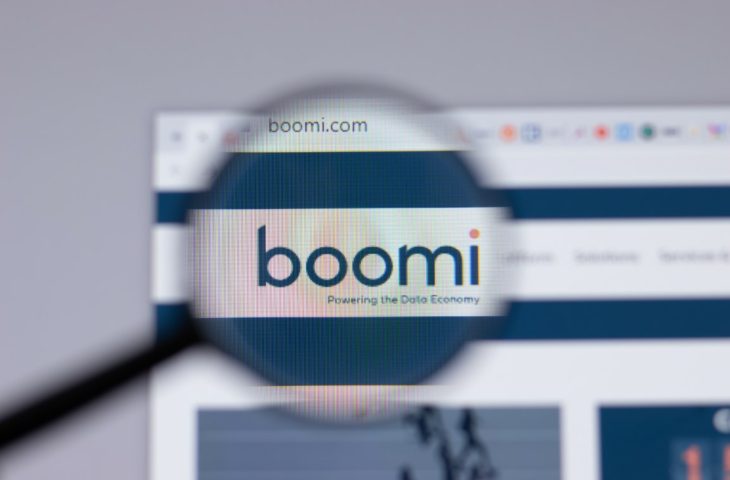Working on an ERP migration? Don’t be surprised if you’re locked into one provider
- July 6, 2023
- 0
You can book the full package with one of the big brands, but then you might never get out in the future. According to Boomi, this is a
You can book the full package with one of the big brands, but then you might never get out in the future. According to Boomi, this is a


You can book the full package with one of the big brands, but then you might never get out in the future. According to Boomi, this is a risk that many companies underestimate until it’s too late.
One ERP: Every big organization has one and complains about it. This is often a long-established solution on which various applications have been built over the years. Over time, the foundation is no longer strong enough to support future plans, resulting in an ERP migration to the latest version or the introduction of a new package.
Sounds simple, but in practice it is the most expensive and complex projects that organizations have to deal with precisely because they are linked to almost every process in the company. Oracle, SAP, Microsoft or Salesforce, they all make a lot of money maintaining these applications and would like to keep you in their bubble.
Is your company taking the step towards an ERP upgrade or ERP migration? Consider a multi-year project to create a solid, scalable new foundation. You just have to be careful not to make the same mistake again and risk everything, warns Kris Janssens, senior account executive at Boomi.
In the world of ERP providers, there are parties that do everything and much more, such as SAP or Salesforce, and parties that only rely on ERP, such as IFS. Janssens thinks it is important to make a distinction in this regard.
“If you choose a party that only takes on the ERP part and nothing else, you remain independent in your decision as to what you want to do with it. The big providers, who put more in their package, such as their own connectors to other tools, may initially appear interesting in terms of price. The downside is that you run the risk of vendor lock-in.”
What if the ERP vendor suddenly decides to raise the price? When everything is in one ecosystem, you can’t quickly move elsewhere.
Kris Janssens, Senior Account Executive at Boomi
“What if the ERP vendor suddenly decides to raise the price? Since you buy everything from one vendor, you have to pay as the alternative requires another difficult migration. After all, everything that cannot be quickly relocated to another location has been brought together in one ecosystem.”
It goes without saying that a company like Boomi isn’t a fan of big ERP vendors that offer everything, including connectors. That way, you don’t get to the negotiating table because you’re unlikely to win price-wise. On the other hand, there is a clear remark from Janssens that supplier loyalty is dangerous.
He cites an example where a Belgian bank approached Salesforce a few years ago. Since Salesforce acquired Mulesoft in 2018, the company has had its own iPaaS (Integration Platform as a Service) platform in its ranks to integrate applications across different environments.
“Salesforce put pressure on us to sign quickly, and the bank quickly wanted a counteroffer from us. Since the use case was not yet fully defined, we did not participate. A few months later it was time for some POCs (Proof of Concepts), and this is where our expertise came into play. We were then able to win this order, despite the price advantage through the combination of Mulesoft and Salesforce. Since Boomi only does this, we are very strong at it. The customer sees that too.”
Janssens understands that the price advantage can be very interesting and that certain companies get carried away. “Combining everything is cheaper, but you notice that there is often no focus when it comes to middleware. I prefer organizations to come up with an ERP plan that has the core business well anchored. Since we are platform independent, we cooperate with everything.”
We have application and technology connectors that allow us to let almost anything communicate with each other.
Kris Janssens, Senior Account Executive at Boomi
For him, an independent iPaaS provider is an important strategic decision for the future of a company. “Boomi was cloud-native from the start. We have application and technology connectors that allow us to let almost anything communicate with each other. This process is also very visual and based on low-code or even no-code.”
Today, integration with the cloud is a key cornerstone of any digital transformation. “You build on that, but at the same time you have to be able to take that foundation with you. iPaaS is only part of a larger story, but a very important one,” emphasizes Janssens.
“Today companies are under pressure because there are challengers who can react much faster. The New kids on the block As the market changes, it is up to your company to evolve as quickly as possible.”
This is an editorial in collaboration with Boomi. This series began with a story about why you can and should use heritage to bridge innovation. You can read the full article here.
Source: IT Daily
As an experienced journalist and author, Mary has been reporting on the latest news and trends for over 5 years. With a passion for uncovering the stories behind the headlines, Mary has earned a reputation as a trusted voice in the world of journalism. Her writing style is insightful, engaging and thought-provoking, as she takes a deep dive into the most pressing issues of our time.